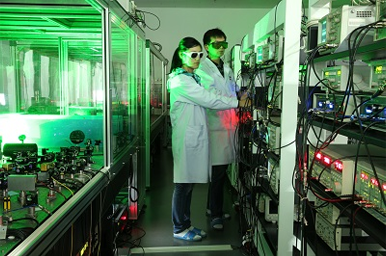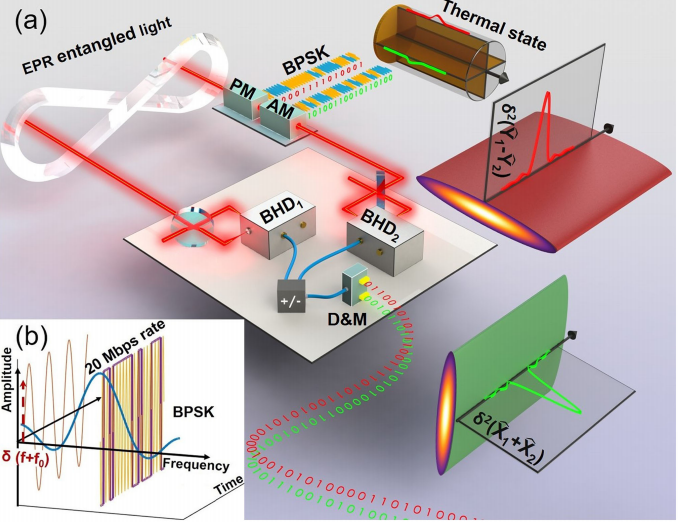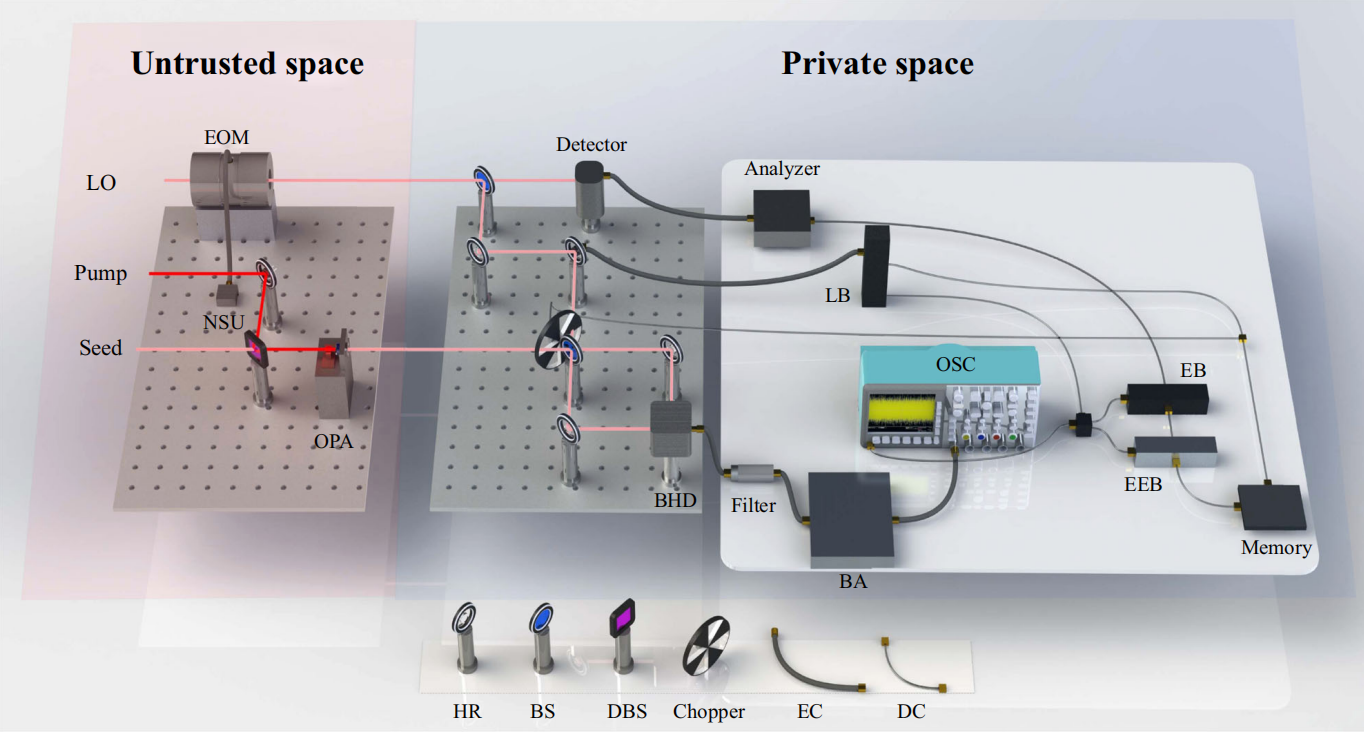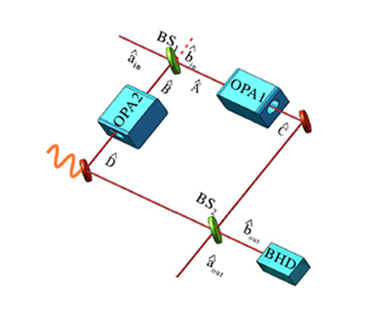


The main research of our lab focuses on experimental and theoretical research of generation and application of non-classical light. Quantum information network enables quantum information protocols among multiple remote users, which consists of quantum channel and quantum node. On one hand, quantum channels are used to sense and transfer quantum information. Based on generation of high quality entangled optical fields, we investigate squeezing enhanced quantum interferometer, fiber based deterministic quantum teleportation, and multiple user quantum secret sharing. On the other hand, quantum nodes are used to store and process quantum information. Based on high fidelity quantum memory, we study quantum memory for multipartite entangled optical fields, and quantum repeater. We will provide the research base of high rate metropolitan quantum network.

High-Speed Quantum Radio-Frequency-Over-Light Communication
Authors:Shaocong Liang, Jialin Cheng, Jiliang Qin, Jiatong li, Yi Shi, Zhihui Yan, Xiaojun Jia, Changde Xie and Kunchi Peng

Semi-device-independent quantum random number generator with a broadband squeezed state of light
Authors:Jialin Cheng, Shaocong Liang, Jiliang Qin, Jiatong Li, Zhihui Yan, Xiaojun Jia, Changde Xie and Kunchi Peng

High-performance cavity-enhanced quantum memory with warm atomic cell
Authors:Lixia Ma, Xing Lei, Jieli Yan, Ruiyang Li, Ting Chai, Zhihui Yan, Xiaojun Jia, Changde Xie and Kunchi Peng
We report a high-performance cavity-enhanced electromagnetically-induced-transparency memory with warm atomic cell in which a scheme of optimizing the spatial and temporal modes based on the time-reversal approach is applied. The memory efficiency up to 67 ± 1% is directly measured and a noise level close to quantum noise limit is simultaneously reached. It has been experimentally demonstrated that the average fidelities for a set of input coherent states with different phases and amplitudes within a Gaussian distribution have exceeded the classical benchmark fidelities.

Quantum interferometer combining squeezing and parametricamplification
Authors:XiaojieZuo, Zhihui Yan, Yanni Feng, Jingxu Ma, Xiaojun Jia, ChangdeXie and Kunchi Peng
We proposeand experimentally demonstrate a compact quantum interferometerinvolving two optical parametric amplifiers and the squeezed statesgenerated within the interferometer are directly used for thephase-sensing quantum state. By both squeezing shot noise andamplifying phase-sensing intensity the sensitivity beyond thestandard quantum limit is deterministically realized and a minimumdetectable phase smaller than that of all present interferometersunder the same phase-sensing intensity is achieved. Thisinterferometric system has significantly potential applications in avariety of measurements for tiny variances of physical quantities.

